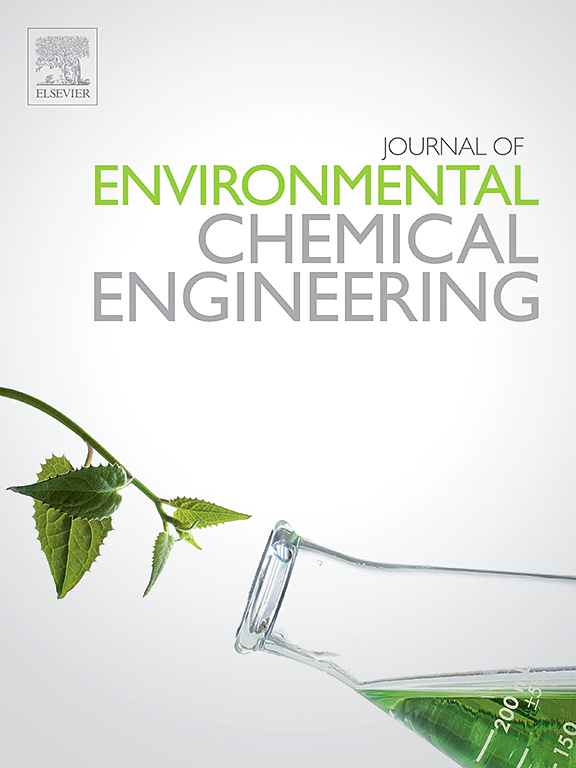A critical review on photocatalytic reductive conversion of uranium by CdS-based catalysts
IF 7.2
2区 工程技术
Q1 ENGINEERING, CHEMICAL
引用次数: 0
Abstract
The conversion of soluble hexavalent uranium (U(VI)) to insoluble tetravalent uranium (U(IV)) facilitates uranium recovery. However, current efficient uranium conversion technologies face challenges such as high energy consumption and/or limited selectivity. Photocatalytic technology has emerged as one of the most effective methods for U(VI)/U(IV) conversion, but the necessity of sacrificial agents restrains its real application. CdS has gained significant attention in recent years since CdS-based catalysts avoid sacrificial agent usage to some extent, benefiting from their advantageous conduction band position and narrow bandgap. However, their application remains debated due to potential photocorrosion during treatment processes. The current work conducts a critical review on photocatalytic reductive conversion of U(VI) by CdS-based catalysts. Properties and design strategies of CdS-based materials are discussed based on the structural and physicochemical properties of CdS, including element doping, defect engineering, hetero/homojunction, biohybrid and morphology control. The electron transfer mechanisms and their impact on U(VI) reduction is also elucidated, together with the analysis of intermediates. The effects of various factors, such as oxygen environment, coexisting metal ions, pH, biological contamination, electron sacrificial agents and photocorrosion on the reduction of U(VI) by CdS-based photocatalysts are highlighted. Then, available strategies to overcome complex environmental challenges are summarized. Finally, the challenges and prospects of CdS-based materials for its future applications are discussed.
镉基催化剂光催化还原转化铀的研究进展
可溶六价铀(U(VI))转化为不可溶四价铀(U(IV))有利于铀的回收。然而,目前的高效铀转化技术面临着诸如高能耗和/或选择性有限等挑战。光催化技术已成为U(VI)/U(IV)转化最有效的方法之一,但牺牲剂的必要性制约了其实际应用。近年来,基于CdS的催化剂由于其优越的导带位置和窄的带隙,在一定程度上避免了牺牲剂的使用,受到了广泛的关注。然而,由于在处理过程中潜在的光腐蚀,它们的应用仍然存在争议。本文综述了cds基催化剂光催化还原转化U(VI)的研究进展。从CdS的结构和物理化学性质出发,讨论了CdS基材料的性能和设计策略,包括元素掺杂、缺陷工程、异质/同质结、生物杂化和形态控制。本文还阐述了电子传递机理及其对U(VI)还原的影响,并对中间体进行了分析。重点讨论了氧环境、共存金属离子、pH、生物污染、电子牺牲剂和光腐蚀等因素对cd基光催化剂还原U(VI)的影响。然后,总结了克服复杂环境挑战的可用策略。最后,讨论了基于cd的材料在未来应用中所面临的挑战和前景。
本文章由计算机程序翻译,如有差异,请以英文原文为准。
求助全文
约1分钟内获得全文
求助全文
来源期刊

Journal of Environmental Chemical Engineering
Environmental Science-Pollution
CiteScore
11.40
自引率
6.50%
发文量
2017
审稿时长
27 days
期刊介绍:
The Journal of Environmental Chemical Engineering (JECE) serves as a platform for the dissemination of original and innovative research focusing on the advancement of environmentally-friendly, sustainable technologies. JECE emphasizes the transition towards a carbon-neutral circular economy and a self-sufficient bio-based economy. Topics covered include soil, water, wastewater, and air decontamination; pollution monitoring, prevention, and control; advanced analytics, sensors, impact and risk assessment methodologies in environmental chemical engineering; resource recovery (water, nutrients, materials, energy); industrial ecology; valorization of waste streams; waste management (including e-waste); climate-water-energy-food nexus; novel materials for environmental, chemical, and energy applications; sustainability and environmental safety; water digitalization, water data science, and machine learning; process integration and intensification; recent developments in green chemistry for synthesis, catalysis, and energy; and original research on contaminants of emerging concern, persistent chemicals, and priority substances, including microplastics, nanoplastics, nanomaterials, micropollutants, antimicrobial resistance genes, and emerging pathogens (viruses, bacteria, parasites) of environmental significance.
 求助内容:
求助内容: 应助结果提醒方式:
应助结果提醒方式:


